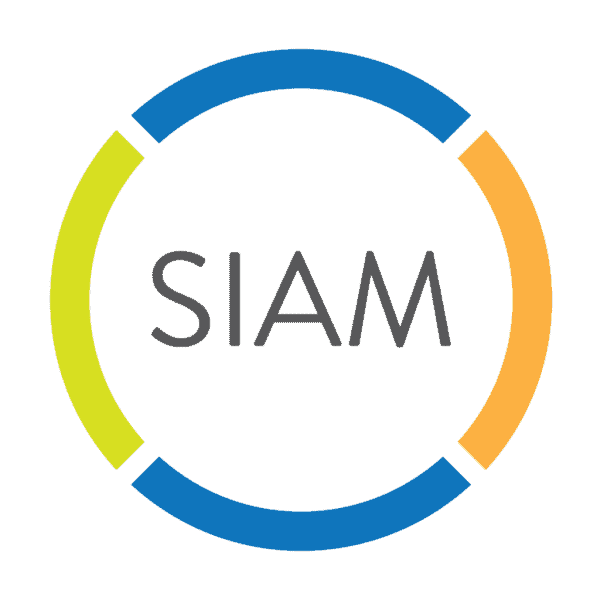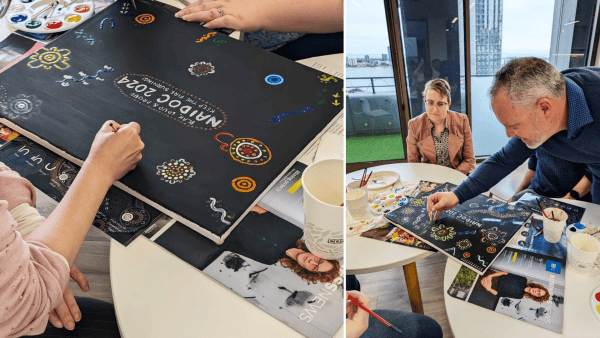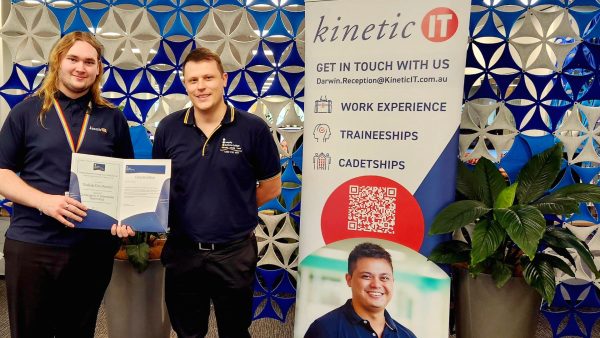Leading Service Integration and Management (SIAM) thought leaders, Simon Dorst and Michelle Major-Goldsmith, share their insights on how to get started with SIAM Archetypes. They spoke on this topic at this year’s ServiceNorth conference. They both have been named itSMF Australia’s Service Management Champion of the year, in 2018 and 2017 respectively, and Simon was recently awarded the Services Management Lifetime Contribution achievement at the itSMF Australian Service Awards 2022.

SIAM Archetypes
The SIAM Bodies of Knowledge explain the full theory to go from ‘zero to hero’ with SIAM. Whilst this is necessary to provide a global practice, pragmatically most organisations don’t start at zero. But more importantly, they don’t necessarily want to be a hero either, or at least not in the short term: They just want to get started somewhere.
According to Oxford Languages, an Archetype is ‘a very typical example of a certain person or thing’. The Kinetic IT Archetypes for SIAM can be considered streamlined versions of the best practice. They explain how an organisation can direct its focus and effort on only those elements of SIAM that are most relevant for them and thus simplify a SIAM implementation or improvement.
RELATED CONTENT: Download our whitepaper about SIAM Archetypes [PDF 1.5MB]
Using SIAM Archetypes in implementation or improvement phases
A starting point for the Archetypes is the recognition that different organisations have different reasons to consider SIAM. These are explained in the Foundation Body of Knowledge as SIAM drivers, and these relate to specific, intended benefits defined in a business case for SIAM:
- Improved service quality
- Optimised costs and increased value
- Improved governance and control
- Improved flexibility and pace
These drivers will largely determine which Archetype is most closely related to an organisation’s initial SIAM model and thus determine which part of our Kinetic IT SIAM Blueprint (or heatmap) to focus on. Each Archetype is identified by an animal with similar characteristics and focus, and our innovative ‘Archetype assessment’ helps you to determine whether you are a collaborative Dolphin, overseeing Owl, operationally busy Ant, or an adaptive Fox.
The next step would be to determine where on the journey you are and what is already in place. The SIAM Health Assessment can be helpful here. But if an organisation has already determined their Archetype, it can narrow the scope of this assessment (as they no longer have to look at all of SIAM but only at those elements most relevant to its Archetype).
The Archetypes and journey map assessment (and the definition of the next step) means that an organisation can focus on a limited, and thus more feasible number of SIAM assets, rather than the whole best practice. Once this is completed, the cycle can start again, focussing on the next step of the journey.
RELATED CONTENT: Global SIAM Survey: 9 surprising insights from the SIAM community
Kinetic IT SIAM Archetypes
The Kinetic IT SIAM Archetypes do not provide perfect, ready-to-use templates. Each organisation is different and will have different needs. What they are is a practical way to reduce the scope of SIAM and to narrow the focus of implementation or improvements. This will support increased speed and simplicity, and hopefully provide a SIAM model more aligned to the organisation.
So, this is NOT a silver bullet, but merely a practical tool to help an organisation achieve a suitable and working SIAM model, faster, more effectively, and better aligned to the organisation.
The Kinetic IT SIAM Archetypes whitepaper [PDF 1.5MB] is now available to download.
Want to know more? Contact us to learn how SIAM may suit your organisation or business.
About Simon Dorst
Simon Dorst is an IT professional with 30 years of international experience in IT service management. Originally from the Netherlands, Simon became ITIL-trained and certified in 1992, and has since spent most of his career educating and advising people and organisations throughout the Netherlands, Singapore and Australia of the benefits of service management and its application.
Simon’s current role is Manager, Service Management Services at Kinetic IT and is an accredited training provider and examination centre for ITIL and SIAM courses. Simon plays a key role in developing and delivering ITIL and SIAM training to internal Kinetic IT employees and external participants across Australia, and is also an ITIL, EXIN and BCS examiner.
Follow Simon Dorst on Twitter: @ITILZealot
About Michelle Major-Goldsmith
Michelle Major-Goldsmith has over 25 years industry experience and has worked in almost every continent across the globe. Originally from a social sciences background, Michelle crossed over into IT with a Master’s Degree in Computer Based Information Systems.
Michelle is currently engaged ostensibly in the consulting and training space, she is passionate about service management and all best and enabling practices.
Follow Michelle Major-Goldsmith on Twitter: @MMG9898
















